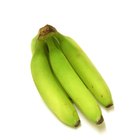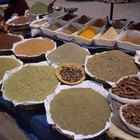The Cassava (Scientific Name: Manihot Esculenta) is a shrubby perennial plant originating in Brazil and known to flourish in tropical zones. A common use of cassava is tapioca, which is made by grinding the leaves of the cassava plant. Tapioca is used in puddings, chips and other snacks. The cassava root, which resembles a potato, is also eaten. Cassava plants generally grow well in tropical climates, and are known to flourish even in poor soil. It is found in the wild in Central and South America. There are more than 10,000 varieties of this plant, and farmers across the world choose the species that are more adapted to their growing conditions.
Nutrition
The cassava is a staple food for about 500 million people around the world. The edible parts of the cassava are the roots and leaves. The roots resemble sweet potatoes and are rich in carbohydrates, and the leaves are rich in vitamins and protein. Although similar to potatoes, the cassava is higher in potassium and has twice the fiber content.
Cassava Flour and Tapioca Flour
Cassava Flour is made by cooking, drying and then grinding the cassava roots. This flour is different from tapioca flour, which is made from the leaves of the cassava plant. Both of them are gluten-free, so they are used widely by those with celiac disease or gluten intolerance.
Uses of Cassava Flour
Cassava is often used as a substitute for wheat flour, especially to make breads, cakes, pasta and dumplings. It is also used to make starchy custards and puddings. In countries where wheat has to be imported and is in limited supply, bread is made by mixing cassava flour with wheat flour. Cassava flour is known to attract fewer insects and pests than normal wheat flour. Cassava flour's starchy texture makes it an excellent thickener, and it is used to thicken soups, baby foods, puddings, sauces and gravies. Cassava flour is also used as a binding agent in sausages and processed meats to keep the meat together and ensure that it does not dry out completely while it is cooked.
Uses of Tapioca Flour
Tapioca flour, which is made from the ground leaves of the cassava plant, is also used as a substitute for wheat or other carbohydrates. It is a very popular flour among bakers, because it gives breads and cakes a white finish and a chewy texture. It has no strong aroma of its own, so it is an ideal choice as a thickener because it does not interfere with or overpower the taste or smell of any dish.
Related Articles

What Type of Food Do People in Honduras ...

Is Teff Flour Gluten-Free?

Difference Between Soba and Udon Noodles

Bulgar Wheat Vs. Couscous

Southeast Asian Diet & Nutrition

How to Eat Buckwheat Raw

Staple Foods in Africa

What Can I Substitute for Cornstarch?

Afghan Spices

How to Soak Amaranth

What Is Agave Syrup?

The Most Popular Foods of Puerto Rico

What Is the Nutritional Value of Wheat?

Types of Taro

What Is White Oat?

Nigerian Herbs & Spices

List of Vegetables for the Paleo Diet
Can I Grind Quinoa?

How to Replace Wheat

How to Cook Moose Meat
References
Writer Bio
Brian Cruze has more than 20 years of experience as a copywriter and senior writer for firms such as Metro Publications and the Penguin Group in London. His fortes include home improvement, fictional stories and societal issues. Cruze has a Master of Arts in creative writing from City University London.